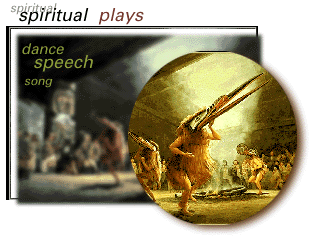
      
�
|
Canada has a rich theatrical history extending back over centuries. The first documented theatrical event in English took place aboard ship during Sir Humphrey Gilbert's expedition to Newfoundland in 1583. Prior to that, native cultures had been performing their own indigenous drama likely for hundreds of years. The Ojibwa, Iroquois, Plains Indians, Nootka and Inuit to name a few, used masks and props to perform elaborate spirit plays. One of the most spectacular theatrical events staged anywhere in the world is that of the British Columbia-based Kwakiutl who performed the Mystery Play--a cycle of spirit plays told in dance, song and speech over a 4-5 month period. It has been compared to the Medieval Mystery cycle that retells the story of the birth of the world through to the Crucifixion. The plays are performed non-stop in sequence on a linked train of carts that are moved in and out.

The first play composed and performed in North America is Le Théâtre de Neptune. It was a verse drama (published in Paris in 1609) that employed cannons, trumpets and a cast of 70-80 Micmac and French actors. The play was written by a Frenchman, Marc Lescarbôt, the theme of which, is a celebration of French imperial power in the New World.
While exploring this teaching unit, teachers and students will identify and understand patterns and trends rooted in the early days of Canadian theatre and that still continue today. Events such as the dominance of foreign touring companies and stars who realized lucrative gains while playing in Canada. The reliance on foreign plays and playwrights, all of which hindered the development of indigenous Canadian drama exploring our own culture. Just in the past 30 years has such domestic drama really come into its own. Today, the Canadian theatre scene is vibrant and highly diversified. Canadian and visiting theatregoers may choose to explore amateur theatre of all kinds, alternative, experimental, regional, festivals and large, commercial theatrical productions comparable in scope and popularity to any in the world.
This unit will culminate in a choice of three major projects: the design and building of a theatre to scale, writing and performing an original one-act play or mounting a production of an existing Canadian play.
This teaching unit is appropriate for the following curriculum areas:

|



